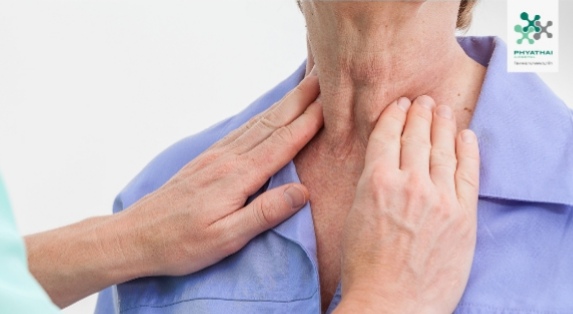Lymphadenitis: Causes and Treatment.
5 min read
Lymphadenitis is an infection in one or more lymph nodes, which makes them enlarged. The lymph nodes may be very painful, and symptoms may include chills and fever. Treatment typically involves antibiotics. Lymphadenitis meansTrusted Source that one or more lymph nodes are swollen. Typically, infection with bacteria, viruses, or fungi causes lymphadenitis. The condition may also mimic other diseases. For example, mesenteric lymphadenitis (inflammation of the lymph nodes in the abdomen) may mimic signs of appendicitis.

Swollen lymph nodes may feel hard, tender, and more noticeable than usual. Someone with swollen lymph nodes has lymphadenopathy. Lymphadenopathy is not a disease or illness, but it may be a symptom. Lymphadenitis, by contrast, means that the lymph nodes have an infection requiring treatment. They are distinct conditions. Read on to learn more about lymphadenitis, its causes, diagnosis, and treatment.
Types: Lymphadenitis may beTrusted Source bilateral, affecting lymph nodes on either side of the body. It may cause lymph nodes on either side of the neck to swell. It may also be unilateral, affecting a single lymph node.
There are lymph nodes throughoutTrusted Source the body: neck, abdomen, chest, armpits, and groin. A person is more likely to develop lymphadenitis during or following an infection in a nearby area. For example, having an ear infection or strep throat may lead to lymphadenitis in the cervical lymph nodes of the neck.
The infection can also affect other lymph nodes if it enters the bloodstream. Lymphadenitis can typically occur due to the following: Ear infection, olds, skin infection, dental infection.
Acute vs. chronic: Doctors may classify lymphadenitis as acute or chronic. Acute lymphadenitis lasts less than 2 weeks and occurs due to an infection, such as strep throat. Chronic lymphadenitis lasts 6 weeks or longer. It can occur because of a longer-term infection, such as mononucleosis, or in rare cases, because of cancer. Sub-acute lymphadenitis lasts 2–6 weeks and occurs similarly to chronic lymphadenitis.
Causes: Lymph nodes contain immune cells that help fight infection. Enlarged lymph nodes typically indicate infection.Lymphadenitis occurs whenTrusted Source bacteria, viruses, or fungi reach the lymph nodes, causing infection. There can also be swelling and intense pain. Less commonly, tuberculosis and cat scratch disease can lead to lymphadenitis. Sometimes, a doctor may not be able to identify the infection that led to lymphadenitis.
Symptoms: Anyone can develop lymphadenitis. However, children are more likelyTrusted Source to experience an infection of the lymph nodes. The main symptom of lymphadenitis is a swollen, very painful lymph node. Other symptoms include: fever, chills, feeling sick redness on the skin over the lymph node, visible swelling over the lymph node.
Diagnosis: A doctor may suspectTrusted Source lymphadenitis based on symptoms and the appearance of the lymph nodes. In some cases, a healthcare professional may start treatment based solely on appearance.
Ultrasound imaging is typically the first-line imaging method doctors recommendTrusted Source. It can be beneficial in diagnosing cervical lymphadenitis or swollen lymph nodes found in the neck.
Other diagnostic tests may include: Laboratory exams: This involves various tests that look for specific bacteria or viruses that may be causing the lymph nodes to become swollen. It includes a complete blood count, liver function tests, and other routine blood tests.
Imaging scans: CT scans can provide detailed images of the lymph nodes and surrounding structures, for example, the nerves or blood vessels. They may also provide information about any abscesses before surgery.
Fine needle aspiration: This procedure involves inserting a needle into the lymph node and withdrawing a fluid sample. It is useful in determining the cause of infection.
Treatment: Treatment usually involves antibiotics. A person may receive intravenous (IV) antibiotics in the hospital. A doctor may prescribe a broad-spectrum antibiotic such as Augmentin as a first-line treatment for a wide range of bacteria. If a doctor suspects the person has an MRSA infection, they may prescribe clindamycin. A person may also need pain medication.
In some cases, the infection may be severe or cause an abscess. Abscesses may spread, cause intense pain, or lead to sepsis. A doctor may need to surgically drain an abscess.
A 2019 studyTrusted Source assessing 567 pediatric cases of lymphadenitis found the following: 86.9% went home from the clinic rather than to the hospital 29% had IV antibiotics on the first visit to the emergency department. 19.3% had subsequent unplanned visits to the emergency department 7.4% had lymph nodes surgically drained.
Typically, people may start treatment with oral antibiotics as an outpatient. However, if there is no improvement or the condition worsens, they may need to go to the hospital. When lymphadenitis becomes chronic, a person may need additional tests to identify the cause. A doctor may recommend ongoing monitoring or a different course of antibiotics. Can it resolve on its own?
Treatment can usually cure lymphadenitis. There is usually no need for incision and drainage unless there is a persistent abscess. After this procedure, the area may still feel a bit firm and can take a while to resolve. Sometimes, lymphadenitis may resolve without treatment. This often occurs with mesenteric lymphadenitis, which refers to swollen lymph nodes in the abdomen.
Complications: Children are more likelyTrusted Source to develop complications if they: have a fever, have larger lymph nodes, had prior treatment with antibiotics. If left untreated, lymphadenitis may cause complications. These can include: abscess formation, a painful collection of pus cellulitis, a serious infection in the deeper layers of the skin sepsis, an infection affecting the bloodstream other complications associated with drainage surgery, for example, another infection.
This list is not exhaustive, and other complications may occurTrusted Source with specific forms of the condition.
Lymphadenitis vs. lymphadenopathy:
Lymphadenopathy generally refersTrusted Source to swollen lymph nodes. Lymphadenitis refers to an infection that causes lymph nodes to become swollen. Lymphadenopathy can occur for many reasons. Usually, it occurs because the body is fighting an infection. The lymph nodes swell as part of the immune system’s response. Reactive lymphadenopathy can also occur in response to inflammation. The inflammation may occur for various reasons, such as a response to dental work or hair dye.
Lymphadenitis means the infection is in the lymph nodes. Distinguishing one from the other can sometimes be challenging. Sometimes the skin over the lymph nodes becomes inflamed, pointing toward lymphadenitis. The lymph nodes also feel more tender and painful with lymphadenitis than with lymphadenopathy.
Summary: Lymphadenitis can be very painful. If left untreated, some infected lymph nodes can form abscesses or develop infections that spread to other areas of the body. It is important to see a healthcare professional for prompt treatment.
In most cases, lymphadenitis responds well to antibiotic treatment. However, sometimes the condition becomes chronic. When this occurs, a doctor may recommend additional testing to rule out potentially serious diagnoses such as cancer and atypical infections.
Note: This article is not originally owned by Umuaka Times.





